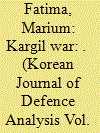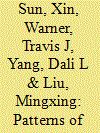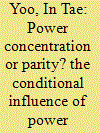| Srl | Item |
| 1 |
ID:
148538


|
|
|
|
|
| Summary/Abstract |
In the winter of 1998-99, the inexplicable presence of Pakistani troops under the pretext of being local freedom fighters in the Indian-administered side of Kashmir brought the region to the brink of a nuclear war. This paper probes the military rationale behind Pakistan`s initiative, organizational interests, internal politicking among different state organs, and the role of a few powerful individuals in the operation. It takes into account the important dimensions of strategy employed during the preparations for the Kargil War and the errors on the part of Pakistani planners which if addressed could have reversed the outcome of the operation. The controversies surrounding the Kargil conflict are discussed through the works of academicians and memoirs of the military commanders from India and Pakistan. The first part of the paper focuses on the rivalry and causes of the outbreak of war between India and Pakistan by explaining the beliefs and psychology of the military planners based on the premise of Cashman and Robinson. The second part reviews the political and nuclear milieu in which the conflict took place, while the third part accounts for the international efforts to prevent the conflict from escalating. The fourth part draws conclusions from the entire episode, indicating the discrepancies on both sides and the evidence that Kargil was unique because it challenged the military logics.
|
|
|
|
|
|
|
|
|
|
|
|
|
|
|
|
| 2 |
ID:
123695


|
|
|
|
|
| Publication |
2013.
|
| Summary/Abstract |
A 'dual-power structure' governs the Chinese countryside. Branch committees of the Chinese Communist Party, traditionally the centers of power in the villages, increasingly share their authority with elected villagers' committees. Seeking to illuminate the factors contributing to the division of authority between these 'two committees', we view Party branch secretaries and the chairs of villagers' committees as the agents of two distinct principals. Party branch secretaries tend to derive their authority from township authorities, while villagers' committee chairs derive theirs from their village electorates. We predict that the division of authority between the two committees varies with (a) the relative levels of activism exhibited by the principals; and (b) the perceived legitimacy of the agents, as determined by their method of s/election. Through analysis of a unique dataset, we test four hypotheses derived from this framework. Our findings contribute to a better understanding of the 'exercise of power' in rural China and shed light on the dynamics of China's political evolution.
|
|
|
|
|
|
|
|
|
|
|
|
|
|
|
|
| 3 |
ID:
153125


|
|
|
|
|
| Summary/Abstract |
Which condition between power concentration and power parity among regional countries is conducive to regional economic integration? The literature has suggested mixed findings as to the influence of power distribution. This study examines conditional effects of power distribution by identifying associated conditions to produce formal regional economic integration. Based on the comprehensive data on plurilateral trade agreements, this study employs both fuzzy set Qualitative Comparative Analysis (fsQCA) and process tracing techniques. The fsQCA reveals multiple jointly sufficient conditions to the outcome. In particular, I focus on two such conditions: (1) the presence of a regional hegemon with surrounding countries of homogeneous polity type and (2) the strong intraregional trade interdependence in conjunction with power parity among countries. These conditions are further supported in within-case analyses. These results indicate the conditional effect of power distribution and the existence of multiple paths toward regional economic integration.
|
|
|
|
|
|
|
|
|
|
|
|
|
|
|
|
| 4 |
ID:
148957


|
|
|
|
|
| Summary/Abstract |
This article explores the possibility of conceiving South America and Southern Africa as subsystemic unipolarities under Brazilian and South African primacy, respectively. It argues that this concept, when applied to these regions, sheds light not only on the long-term strategies behind the Brazilian and South African foreign policies towards their neighbourhood, but also on the behaviour of secondary regional powers and small states. This hypothesis questions the maxim that considerations related to polarity affect great powers only. After examining the Brazilian and South African cases, the author undertakes a comparative analysis of 17 countries in these regions, showing that the behaviour of politically stable countries in these regions is as predicted by theories of unipolarity.
|
|
|
|
|
|
|
|
|
|
|
|
|
|
|
|